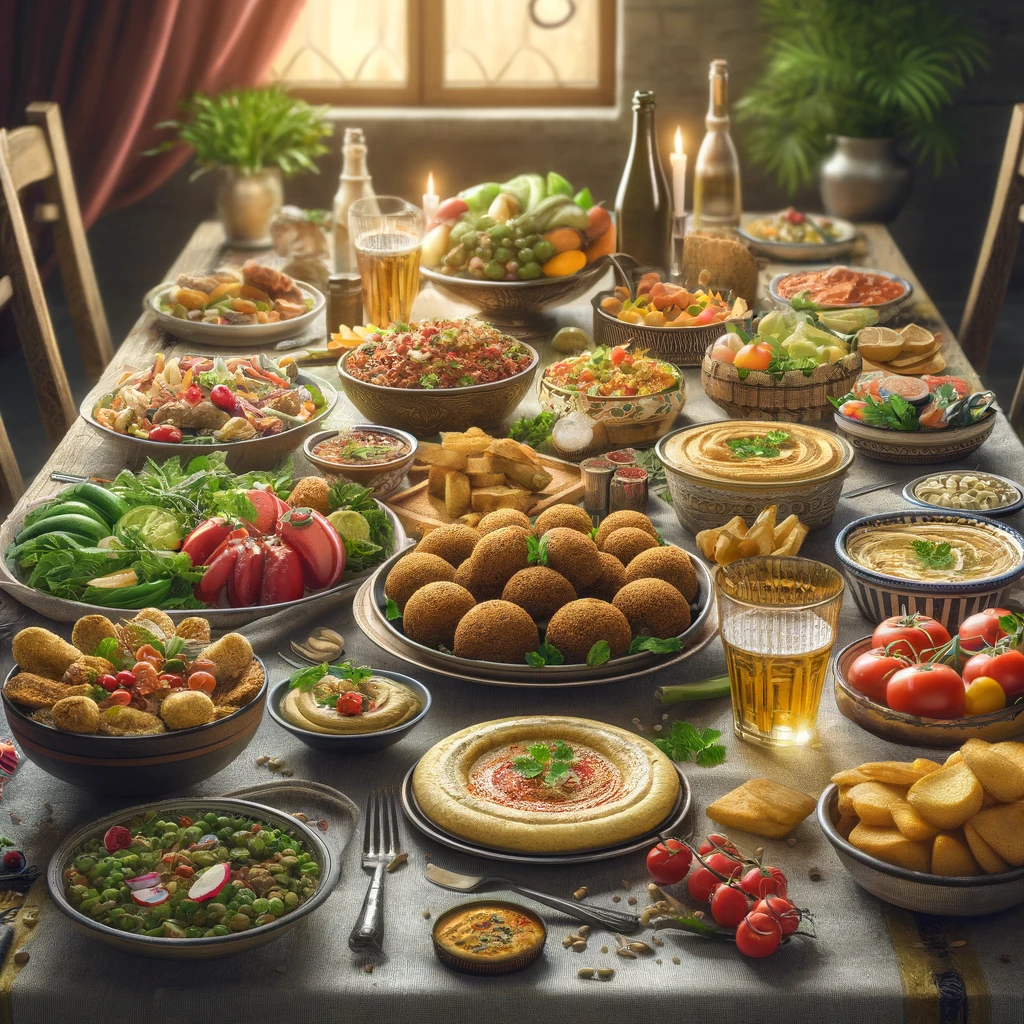Palestinian Cuisine: A Blend of Tradition and Regional Influence
Palestinian cuisine is a rich and diverse culinary tradition that reflects the history, geography, and cultural interactions of the region. Spanning centuries of influences from Ottoman, Arab, Levantine, and Mediterranean cuisines, Palestinian food is characterized by fresh ingredients, aromatic spices, and bold flavors. While Palestine has long faced political and social challenges, its culinary heritage remains a unifying aspect of Palestinian identity, both within the territories and among the diaspora.
In recent years, there has been a growing recognition of the shared culinary heritage between Palestinians and Israelis, with many traditional Palestinian dishes finding their place on Israeli tables. This intersection of food culture offers a unique opportunity for understanding and dialogue, as both Israelis and Palestinians explore the commonalities in their culinary traditions while celebrating their distinct contributions to the regional food scene.
A Culinary History Rooted in the Land
Palestinian cuisine is deeply rooted in the land and agricultural traditions of the region. The fertile soil of the West Bank, combined with the Mediterranean climate, provides an abundance of fresh produce, including olives, tomatoes, cucumbers, and citrus fruits. Olive oil, in particular, plays a central role in Palestinian cooking, with olive trees holding both cultural and economic significance for Palestinian farmers.
Throughout history, Palestine has been a crossroads for various civilizations, each leaving its mark on the local cuisine. The Ottoman Empire, which ruled the region for several centuries, introduced a number of dishes and cooking techniques that remain popular in Palestinian kitchens today. Similarly, the influence of Levantine cuisine, with its emphasis on fresh vegetables, grains, and spices, can be seen in many Palestinian dishes.
Signature Dishes of Palestinian Cuisine
Palestinian cuisine is known for its flavorful and hearty dishes, many of which are enjoyed across the Levant and beyond. Some of the most iconic dishes include:
- Musakhan: A traditional Palestinian dish made with roasted chicken, sumac, onions, and pine nuts, served over taboon bread. Musakhan is often considered the national dish of Palestine and is a celebration of the olive harvest season.
- Maqluba: A layered rice and vegetable dish, often made with chicken or lamb. The dish is flipped upside down before serving, giving it its name, which means "upside down" in Arabic. Maqluba is a popular dish for family gatherings and special occasions.
- Hummus: A popular dish across the Middle East, hummus is a simple yet flavorful spread made from blended chickpeas, tahini, lemon juice, and garlic. While its origins are debated, hummus has become a staple of both Palestinian and Israeli cuisine.
- Falafel: Deep-fried balls made from ground chickpeas or fava beans, falafel is a popular street food in both Palestine and Israel. Often served in pita bread with salad and tahini, falafel is a beloved snack enjoyed by both communities.
- Knafeh: A sweet pastry made from thin noodle-like dough, soaked in syrup and layered with cheese or cream, knafeh is a beloved dessert in Palestinian cuisine. It is particularly associated with the city of Nablus, where it is a specialty.
Shared Culinary Heritage with Israel
One of the most interesting aspects of Palestinian cuisine is its shared heritage with Israeli cuisine. Both Palestinians and Israelis draw from the same culinary traditions, incorporating similar ingredients and cooking methods into their dishes. This shared culinary culture is a reflection of the region's complex history, where food has served as a common language between communities.
Many of the dishes that are popular in Israel today have their roots in Palestinian and Levantine cuisine. For example, hummus and falafel are enjoyed by both Palestinians and Israelis, with each group claiming them as their own. Similarly, dishes like shawarma, a popular street food in Israel, have origins in the broader Levantine region, including Palestine.
While the political conflict between Israelis and Palestinians often dominates headlines, food offers a unique opportunity for connection and dialogue. Israeli chefs and food writers have increasingly acknowledged the influence of Palestinian cuisine on Israeli food culture, and there have been numerous collaborations between Israeli and Palestinian chefs aimed at promoting understanding through the shared love of cooking.
The Role of Food in Palestinian Identity
For Palestinians, food is not only a source of sustenance but also a key aspect of cultural identity. In the face of displacement and occupation, Palestinian cuisine has become a way for Palestinians to maintain a connection to their land and heritage. Traditional dishes, often passed down through generations, serve as a reminder of home for those living in exile or under occupation.
In Palestinian households, meals are often a communal affair, with family and friends gathering around large platters of food to share in the bounty of the land. The preparation of certain dishes, such as maqluba or musakhan, is often reserved for special occasions, marking important moments in the family or community's life. Food also plays a central role in religious and cultural celebrations, with dishes varying by season and occasion.
Challenges and Opportunities for Palestinian Cuisine
Despite the rich culinary tradition of Palestine, the region's political and economic challenges have had an impact on the food industry. In Gaza, for example, the Israeli-Egyptian blockade has severely limited access to ingredients, making it difficult for families to prepare traditional dishes. Similarly, restrictions on movement in the West Bank have affected agricultural production, limiting the availability of fresh produce in Palestinian markets.
However, there are also opportunities for Palestinian cuisine to gain greater recognition on the global stage. Palestinian chefs and food writers have increasingly been sharing their culinary heritage with the world, through cookbooks, restaurants, and social media platforms. These efforts have not only raised awareness about Palestinian cuisine but also provided a platform for dialogue about the broader political and cultural context of the region.
Conclusion: Food as a Bridge to Understanding
Palestinian cuisine, with its rich flavors and deep cultural roots, offers a unique window into the history and identity of the Palestinian people. While the political situation in the region remains fraught with challenges, food has the power to transcend borders and bring people together. Both Israelis and Palestinians share a love for the same dishes, reflecting the shared history and culture of the region.
As Israeli and Palestinian chefs continue to collaborate and celebrate their culinary traditions, food can serve as a bridge to greater understanding and dialogue. In a region often defined by division, the simple act of sharing a meal can be a powerful reminder of the common humanity that connects us all.



